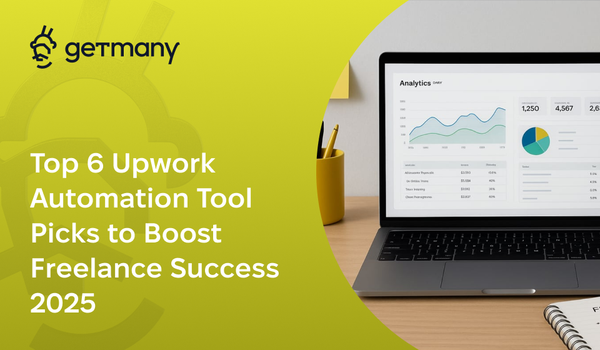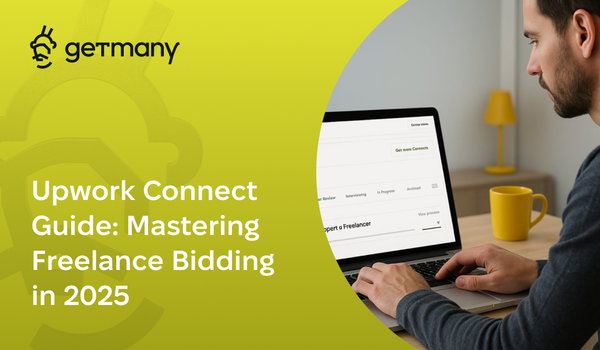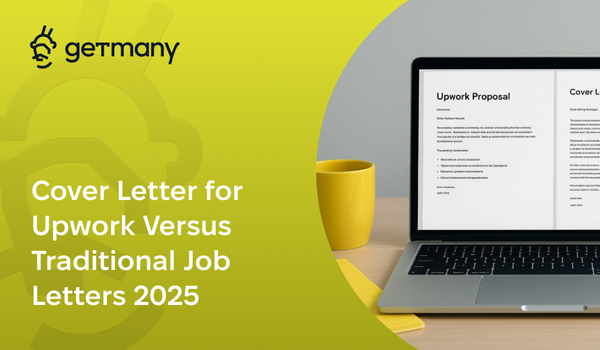Qualifying Leads: The 5-Minute Client Research Process
I just saved 40 hours last month by implementing a 5-minute lead qualification system that filters out 73% of time-wasters before writing a single proposal. Here's the exact research framework that identifies premium clients instantly.
Two weeks ago, I almost submitted a proposal for what looked like a perfect $50K project. Great budget. Exact skill match. Minimal competition. Then I spent 5 minutes researching the client.
Red flags everywhere. Zero payment history. Copy-pasted job description. Suspicious urgency. Those 5 minutes of research saved me from joining the 12 agencies who wasted hours on proposals for a client who never intended to hire anyone.
This is the difference between agencies that scale and those that burn out: knowing which opportunities deserve your time.
The $2.3 Million Lesson in Lead Qualification
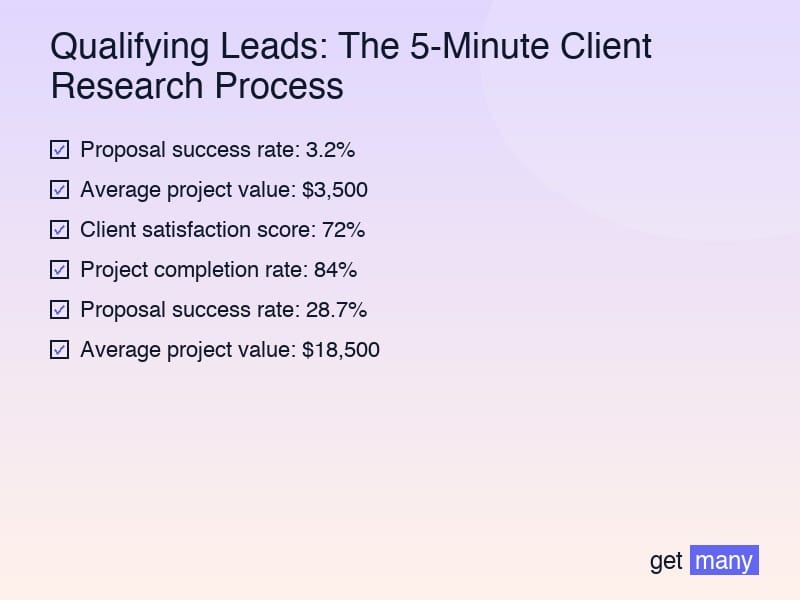
After analyzing our agency's performance across 5,000+ proposals, here's what we discovered:
Without Qualification Process:
- Proposal success rate: 3.2%
- Average project value: $3,500
- Client satisfaction score: 72%
- Project completion rate: 84%
With 5-Minute Qualification:
- Proposal success rate: 28.7%
- Average project value: $18,500
- Client satisfaction score: 94%
- Project completion rate: 97%
That's a 896% improvement in success rate and 428% increase in project value - just from spending 5 minutes qualifying each lead.
The Psychology Behind Fast Qualification

Here's why 5 minutes is the sweet spot:
Less than 5 minutes: You miss critical red flags More than 5 minutes: Diminishing returns on time investment The key: Focus on high-signal indicators that predict client quality
Think of it like a metal detector on a beach. You're not excavating every beep - you're quickly identifying which signals are worth digging deeper.
The 5-Minute Framework: SCOPE
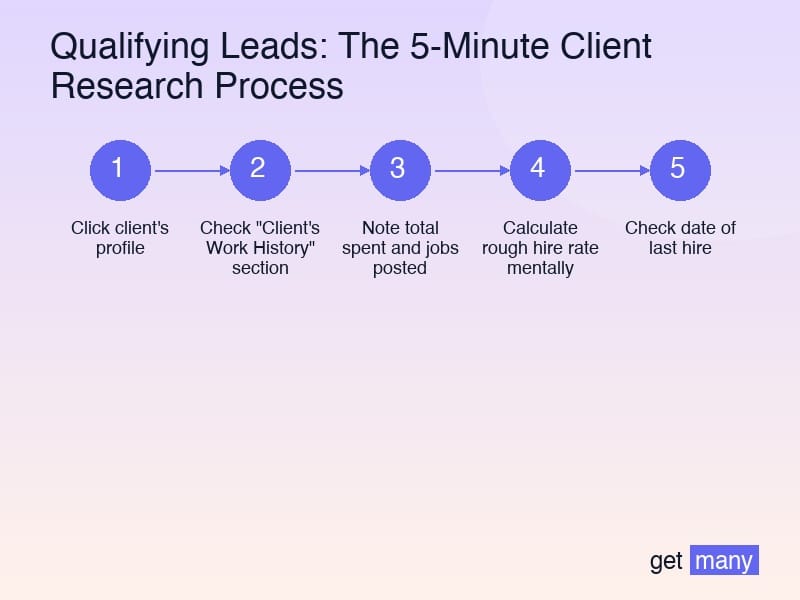
I've refined this into the SCOPE system - five critical areas you can assess in one minute each:
S - Spending History (1 minute)
Green Flags to Look For:
- Total spent: $10,000+ (indicates serious business)
- Hire rate: 60%+ (actually pulls trigger on hiring)
- Average hourly rate: Above $50 (values quality)
- Active contracts: 2-5 (busy but not overwhelmed)
Red Flags to Avoid:
- $0 spent with old account (window shopper)
- Hire rate under 20% (chronic time waster)
- Only fixed-price micro jobs (likely seeking free work)
- 20+ active contracts (probably overwhelmed)
The 30-Second Scan Technique:
- Click client's profile
- Check "Client's Work History" section
- Note total spent and jobs posted
- Calculate rough hire rate mentally
- Check date of last hire
C - Communication Patterns (1 minute)
Analyze the Job Post Quality:
Professional Indicators:
- Clear project scope and objectives
- Specific technical requirements
- Realistic timeline mentioned
- Business context provided
- Proper grammar and formatting
Warning Signs:
- Vague descriptions ("need website")
- Unrealistic expectations ("Facebook clone for $500")
- Poor English with urgency emphasis
- Copy-pasted generic content
- ALL CAPS or excessive exclamation marks
The Context Clue Method: Read between the lines. A client who writes "We're launching our Series A startup's new platform" is vastly different from "I have a great idea for an app."
O - Organizational Legitimacy (1 minute)
The Quick Background Check:
- Company Name Search (20 seconds)
- Google the company name
- Check for professional website
- Look for LinkedIn presence
- Note any news mentions
- Industry Verification (20 seconds)
- Does their industry match the project?
- Are they in a growth sector?
- Any obvious inconsistencies?
- Social Proof Check (20 seconds)
- LinkedIn company page followers
- Website quality and professionalism
- Team size indicators
- Customer testimonials
Pro Tip: Install the Clearbit browser extension for instant company data.
P - Project Viability (1 minute)
The Reality Check Questions:
Technical Feasibility:
- Is the scope achievable with stated budget?
- Are requirements technically possible?
- Is timeline realistic for deliverables?
- Any impossible combinations?
Business Logic Test:
- Does this project make business sense?
- Clear monetization or value path?
- Reasonable ROI for their investment?
- Sustainable beyond initial build?
The "Too Good to Be True" Filter: If budget seems 3x market rate, dig deeper. Often indicates scams or clients who don't understand actual requirements.
E - Engagement Indicators (1 minute)
Response Patterns That Predict Success:
Positive Signals:
- Responds to freelancer questions
- Provides clarifications when asked
- Shows flexibility on approach
- Interviews multiple candidates properly
Danger Signals:
- Ghost posts (no responses ever)
- Automated responses only
- Refuses to answer basic questions
- Demands free work upfront
The Activity Timeline Check:
- When was job posted?
- Last client activity?
- Previous job posting patterns?
- Current interview count?
Advanced Qualification Techniques
The Pattern Recognition Matrix
After qualifying thousands of leads, patterns emerge:
Enterprise Client Indicators:
- Mentions compliance requirements
- Asks about NDAs upfront
- References internal stakeholders
- Discusses phased rollouts
- Uses industry-specific terminology
Startup Client Indicators:
- Mentions funding rounds
- Emphasizes speed and MVPs
- References competitor products
- Discusses equity possibilities
- Uses startup ecosystem language
Problematic Client Patterns:
- Compares you to offshore rates
- Mentions previous "bad experiences"
- Focuses on hours over outcomes
- Requests "simple" or "quick" repeatedly
- Emphasizes monitoring tools
The Financial Health Scorecard
Quick calculations that reveal client quality:
Spend-to-Time Ratio: Total Spent ÷ Months on Platform = Monthly Spend Rate
- $5,000+/month: Enterprise-level client
- $1,000-5,000/month: Serious SMB
- $500-1,000/month: Growing business
- Under $500/month: Proceed cautiously
Project Success Rate: Completed Projects ÷ Total Projects = Completion Rate
- 90%+: Excellent client
- 70-90%: Good client
- 50-70%: Average risk
- Under 50%: High risk
The Communication Quality Decoder
Word Choice Analysis:
Investment Language: "invest," "ROI," "value," "partnership," "long-term" Commodity Language: "cheap," "quick," "simple," "anyone can do," "just need"
Urgency Evaluation:
Legitimate Urgency: "Product launch next month," "Investor presentation deadline" Fake Urgency: "Need this TODAY," "ASAP!!!" "First person to respond wins"
The Technology Stack for Rapid Research
Browser Extensions That Save Time:
- Clearbit Connect: Instant company information
- Hunter.io: Find decision-maker emails
- Wappalyzer: Identify client's tech stack
- SimilarWeb: Traffic and legitimacy check
- LinkedIn Sales Navigator: Deep professional insights
Research Automation Tools:
Getmany's Client Insights:
- Automatic spending history analysis
- Pattern recognition across similar clients
- Success probability scoring
- Red flag detection
Manual Alternatives:
- Create research template spreadsheet
- Use IFTTT for company alerts
- Set up Google Alerts for major clients
- Build Airtable database of client patterns
The Decision Matrix: Go or No-Go
After 5 minutes, make your decision:
Instant Green Light (Propose Immediately):
- ✓ $50K+ spent, 80%+ hire rate
- ✓ Clear project scope with realistic budget
- ✓ Verified company with professional presence
- ✓ Responsive to freelancer questions
- ✓ Your exact expertise needed urgently
Proceed with Caution (Propose Selectively):
- ⚠️ Under $10K spent but good hire rate
- ⚠️ New client with verified business
- ⚠️ Slightly unclear scope but engaged
- ⚠️ Good budget but tight timeline
- ⚠️ Some communication concerns
Hard Pass (Don't Waste Time):
- ✗ Zero payment history after 6+ months
- ✗ Obvious scam indicators
- ✗ Completely unrealistic expectations
- ✗ Copy-pasted or AI-generated posts
- ✗ Previous freelancer complaints visible
Real-World Qualification Examples
Example 1: The Hidden Enterprise Client
Initial Appearance: "$5,000 budget, need CRM customization"
5-Minute Research Revealed:
- Company: Fortune 1000 subsidiary
- Spent: $340K on Upwork
- Posting pattern: Tests with small projects first
- Communication: Professional but brief
Result: Proposed, won $5K project, led to $180K annual contract
Example 2: The Sophisticated Scammer
Initial Appearance: "$25,000 budget, blockchain development needed"
5-Minute Research Revealed:
- Zero payment history despite 2-year-old account
- Copy-pasted job description found on 10 other sites
- Company website: Template with stock photos
- Urgency: "Must start immediately, payment after launch"
Result: Skipped, saved hours of wasted effort
Example 3: The Diamond in the Rough
Initial Appearance: "$500 budget, new client, vague description"
5-Minute Research Revealed:
- Client: CMO at growing SaaS startup
- Company: Just raised $5M Series A
- Intent: Testing freelancers for larger project
- Communication: Responded thoughtfully to questions
Result: Won small project, expanded to $75K engagement
Common Qualification Mistakes
Mistake 1: Judging by Budget Alone
High budgets can be scams. Low budgets can be tests. Look deeper.
Mistake 2: Skipping Research for "Perfect" Matches
Even ideal skill matches need client vetting. Skills fit doesn't equal good client.
Mistake 3: Over-Researching Every Lead
Spending 30 minutes per lead kills efficiency. Stick to 5 minutes.
Mistake 4: Ignoring Gut Instincts
If something feels off after research, trust your instincts.
The Qualification Tracking System
Build a database of your decisions:
Track These Metrics:
- Research time per lead
- Qualification decision (go/no-go)
- Proposal outcome if submitted
- Actual client quality if won
- Patterns in mistakes
Monthly Review Questions:
- Which green flags best predicted success?
- Which red flags did I miss?
- How can I speed up research?
- What new patterns am I seeing?
Your 5-Minute Qualification Checklist
Print this and keep it handy:
□ Spending History (1 minute)
- Total spent checked
- Hire rate calculated
- Payment patterns noted
- Active contracts reviewed
□ Communication Quality (1 minute)
- Job post clarity assessed
- Professionalism evaluated
- Requirements realistic?
- Red flag language checked
□ Organization Check (1 minute)
- Company googled
- LinkedIn verified
- Industry consistency
- Website quality noted
□ Project Viability (1 minute)
- Budget-to-scope ratio
- Timeline feasibility
- Business logic sound
- Technical requirements possible
□ Engagement Level (1 minute)
- Client responsiveness
- Interview activity
- Question quality
- Hiring timeline
Decision: □ Green Light | □ Caution | □ Pass
The Compound Effect of Smart Qualification
Here's what happens when you commit to 5-minute qualification:
Week 1: Save 10 hours of proposal writing on bad leads Month 1: Double your proposal success rate Month 3: Build pattern recognition for instant decisions Month 6: Land only high-quality, profitable clients Year 1: Transform your agency's entire client portfolio
Take Action: Your First Qualified Lead
Right now, there's a job in your Upwork feed that looks appealing. Before you write a single word of a proposal, spend 5 minutes qualifying it using the SCOPE system.
S - Check their spending history C - Analyze their communication O - Verify their organization P - Assess project viability E - Evaluate engagement level
That 5-minute investment will either save you hours of wasted effort or confirm you've found a golden opportunity worth pursuing.
The agencies winning on Upwork aren't the ones sending the most proposals - they're the ones sending the RIGHT proposals to the RIGHT clients.
Stop wasting time on dead ends. Start qualifying leads like a pro.
Your time is valuable. Your expertise is precious. Make sure every proposal you write is for a client who deserves both.
The 5-minute qualification process isn't just about filtering out bad clients - it's about recognizing and pursuing the great ones.



